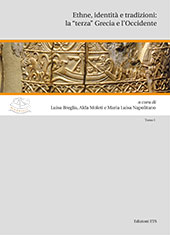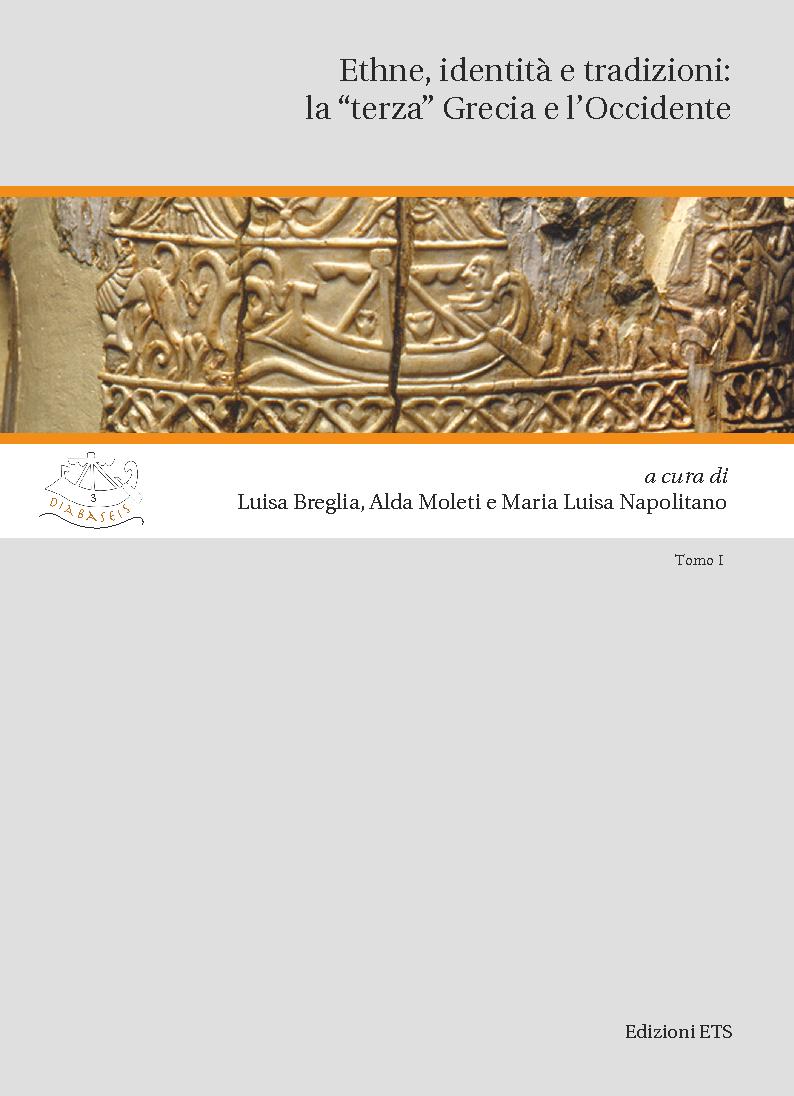Ethne, identità e tradizioni : la "terza" Grecia e l'Occidente
xvii, 722 p. : ill.
Includes bibliographical references (v. 2, p. 133-149) and indexes.
The Pania situla, bears Odyssean scenes, in particular the one shown on the cover of this volume: a ship on the point of being swallowed by a monstrous figure, perhaps Scylla, represented, however, with characteristics which resemble the hydra1: probably of Vulcian production, this object and its figures testify how the hero of the plane, Odysseus has become a paradigm not only of Etruscan navigation, but also for the 'education' of an Etruscan prince himself. This is, therefore, one of the many representations which, together with numerous other data, document the transmission of Greek models to the West and the acquisition of the same on the part of local populations. For some time, the history of these exchanges and these interrelations has been investigated in the context of studies examining mobility in the Mediterranean and sometimes more specifically in studies on colonisation.
The relationship between the Greece of ethnic groups, the "third Greece", to use the title of Gehrke's2 important and founding work, while the West, on the contrary, had been little investigated, excepting a few settings like Lokris and Achaia. The working group, constituted by the units of the five Italian universities (University of Naples Federico II; University of Parma; Ca' Foscari University of Venice; University of Calabria; Sapienza-University of Rome), proposed a project on the theme of the "Third Greece" and the West, investigating the structuring of settlements of the regions to the north of the Gulf of Corinth, a setting which had not always developed following the model of the polis, and thence their relationship with the West, with Delphi and with the Gulf of Corinth itself, as the places of the arrival and subsequent spread of their traditions and identity models, as well as, obviously places for 'exchanges' of other kinds with the varied settings of the Mediterranean world.
The volume presented here contains the results of the working groups studies and other contributions from scholars who have studied similar topics and have provided useful insights for understanding. The research of the different units has gone through various phases, relative to investigations both of single documented institutional settings as well as the literary tradition, especially through epigraphs and numismatics, and on the data of tradition: these works have already been presented to the public in two previous publications, which also had contributions from external foreign and Italian colleagues, one edited by the Venice3 group, and the other by the Cosenza4 group, in which also partecipated external foreign and Italian colleagues. This volume tries to focalise on two common problems touching on the the investigations of each of its component institutions: that of the structuring of identity (both emic and etic), and that of the method through which the various communities transmit their own
We better distinguish the transmission of their selfimages derived from the various sources which report them. Since the 'construction' of ones own identity always occurs in a setting of relationships and is also an interpretation of ones own past, in the ancient world it was elaborated through genealogies, myths and rites to be understood as interdependent, and also stories, epigraphs, monuments and not least, 'choices' of particular institutions.
For Herodtus (8, 144) Hellenikon meant having the same blood, the same language, the same gods, the same customs and even recalling together destructions suffered because of enemies; for Aristotle, the tautotes, (which do not correspond to our concept of identity), express something similar to the homoiotes of friendship and identity (tautotes) between parents and children, or between siblings, because they descend from the same root (EN 1161b); concepts, as we see, distant from the current idea of identity, which is instead careful to gather distinctive characteristics slowly, to elaborate them and to follow their alterations; although, in some way, these indications of the ancient authors, direct us to investigate family connections (genealogies, those which in the Illiad we hear asked of whatsoever stranger arriving in a new land), institutions and rituals. [Publisher's text].
Contributions in Italian, English, and French; preface in English and Italian and abstracts in English.
-
Informations
ISBN: 9788846748355
COLLECTION
DISCIPLINES



